robber flies
Family Asilidae
Overview • Description • Distribution • Taxonomy
Description |
Robber flies are powerfully built. The legs and thorax are relatively large. Most have a long, tapering abdomen. Some are robust, resembling a bumble bee. Some have a very long and slender abdomen, resembling a damselfly. They range from bare to very hairy, but most have a moustache (mystax) and a beard. There are two large compound eyes on the side of the head and three small simple eyes (ocelli) in a triangle on top of the head. The top of the head is depressed (“hollowed out”) between the compound eyes. The ocelli are on a prominent rounded projection (tubercle) between the compound eyes. The mouthparts are modified for piercing and injecting saliva which paralyzes the prey. The antennae have 3 segments. The third segment is elongated and sometimes has a short bristle-like process (style) at the end. |
Distribution |
||
|
Sources |
|
| 7/26/2024 | ||
Taxonomy |
|
Order |
|
Suborder |
Brachycera |
Infraorder |
Orthorrhapha |
Superfamily |
Asiloidea |
Subordinate Taxa |
|
Subfamily Asilinae Subfamily Bathypogoninae Subfamily Brachyrhopalinae Subfamily Dasypogoninae Subfamily Dioctriinae Subfamily Laphriinae Subfamily Laphystiinae (?) Subfamily Leptogastrinae Subfamily Ommatiinae Subfamily Phellinae Subfamily Stenopogoninae Subfamily Stichopogoninae Subfamily Tillobromatinae Subfamily Trigonomiminae Subfamily Willistonininae |
|
Synonyms |
|
|
|
Common Names |
|
robber flies |
|
Glossary
Mystax
On flies, especially in the family Asilidae, a patch of bristles or hairs (mustache) immediately above the mouth.
Ocellus
Simple eye; an eye with a single lens. Plural: ocelli.
Visitor Photos |
||
Share your photo of this insect. |
||
This button not working for you? |
||
Alfredo Colon |
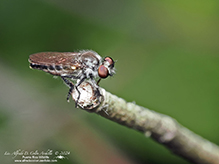 |
John Bellrichatd |
 |
saw this guy chilling out on my deck. Thought it was a dragonfly with its wings missing. |
Katie P |
||
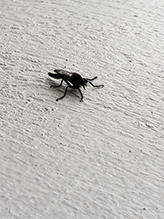 |
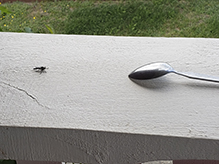 |
|
Resting on my patio; was able to approach for photos without startling it. Teaspoon in pic for scale. |
||
Dan W. Andree |
||
Robber Fly with lunch... Seen it land so went to see what it was and this is it. I filmed it in 4k and it stayed perched with its prey for some time occasionally flying up in air a foot or so and landing on the same spot. Looks like it had one of those yellow jackets/wasps. I had seen robber flies before but not one with anything it caught. A prairie preserve in Norman Co. Mn. is where I came across it. |
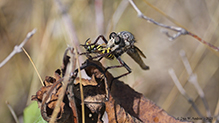 |
|
Pheasantpete |
 |
I believe this is a robber fly but I am open to comments if misidentified. |
Jeff Schneider |
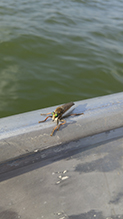 |
it landed on the edge of our boat on Little Pine Lake, near Parham MN. |
Bill Reynolds |
||
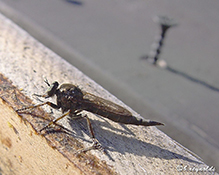 |
||
Hunting flies. Image cropped to give some idea of size. The screw is a typical dry wall screw of an 1.5 inch
|
||
Machimus sp. female It looks like it has caught a Crane fly for dinner. |
||
Kirk Nelson |
||
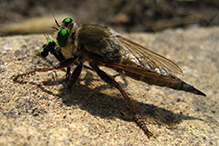 |
||
I had taken a photo of an interesting insect, and when I looked more closely, I could see it had captured another insect. |
||
MinnesotaSeasons.com Photos |
||
|
||
|
||

Slideshows |
Robber Flies |

|
About
Family Asilidae In North America, 883 species(1) About 530 general and 7,000 described species worldwide (Asilidae Home Page) Medium-sized to large predatory flies, often perch in exposed location and make short flies after prey. Typical family characteristics: top of head hollowed out between eyes, with three ocelli in this depression (diagnostic character) body from very hairy to nearly bare typical body form elongated, with tapered abdomen, but other forms as well some groups mimics of hymenoptera face usually "bearded", with prominent mystax mouthparts modified to inject saliva into prey--saliva contains potent neurotoxic and proteolytic enzymes mouthparts similar in both sexes, unlike typical blood-sucking flies, such as Tabanidae antennae with three segments, third segment elongate and often with terminal style source: bugguide.net bugguide.net/node/view/151 |

Visitor Videos |
||
Share your video of this insect. |
||
This button not working for you? |
||
|
Other Videos |
||
|

Visitor Sightings |
||
Report a sighting of this insect. |
||
This button not working for you? |
||
Katy |
Location: Grayling Michigan Also Gaylord Michigan |
John Bellrichatd |
Location: Isanti, MN saw this guy chilling out on my deck. Thought it was a dragonfly with its wings missing. |
 |
Alfredo Colon |
Location: Albany, NY |
 |
| Katie P 6/23/2022 |
Location: Ely, MN Resting on my patio; was able to approach for photos without startling it. Teaspoon in pic for scale. |
 |
| Dan W. Andree 8/23/2021 |
Location: A prairie preserve in Norman Co., Mn. Seen it land so went to see what it was and this is it. I filmed it in 4k and it stayed perched with its prey for some time occasionally flying up in air a foot or so and landing on the same spot. Looks like it had one of those yellow jackets/wasps. I had seen robber flies before but not one with anything it caught. A prairie preserve in Norman Co. Mn. is where I came across it. |
 |
| Pheasantpete 7/31/2021 |
Location: Winona County Stream I believe this is a robber fly but I am open to comments if misidentified. |
 |
| Bill 8/8/2020 |
Location: Carver County, Dahlgren Township Landed on my windshield with a grasshopper in it clutches. Sat for a few minutes then flew away on a beeline to the woods. |
|
| Lindsay Freeland 7/27/2020 |
Location: New London, MN the kids found it. Appeared to have an injured wing. |
|
Steph |
Location: Oylen, MN |
| Jeff Schneider 7/28/2017 |
Location: Otter Tail County it landed on the edge of our boat on Little Pine Lake, near Parham MN. |
 |
| Bill Reynolds 8/22/2003 |
Location: Numedal Township, Pennington Co., Minnesota Hunting flies. Image cropped to give some idea of size. The screw is a typical dry wall screw of an 1.5 inch |
 |
| Kirk Nelson 8/18/2013 |
Location: Upper Sioux Agency State Park I had taken a photo of an interesting insect, and when I looked more closely, I could see it had captured another insect. |
 |
| Bill Reynolds 8/22/2003 |
Location: St. Louis Co. It looks like it has caught a Crane fly for dinner. |
_01t.jpg) |
MinnesotaSeasons.com Sightings |
||
|

Created: Last Updated: © MinnesotaSeasons.com. All rights reserved. |

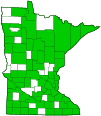
_01s.jpg)